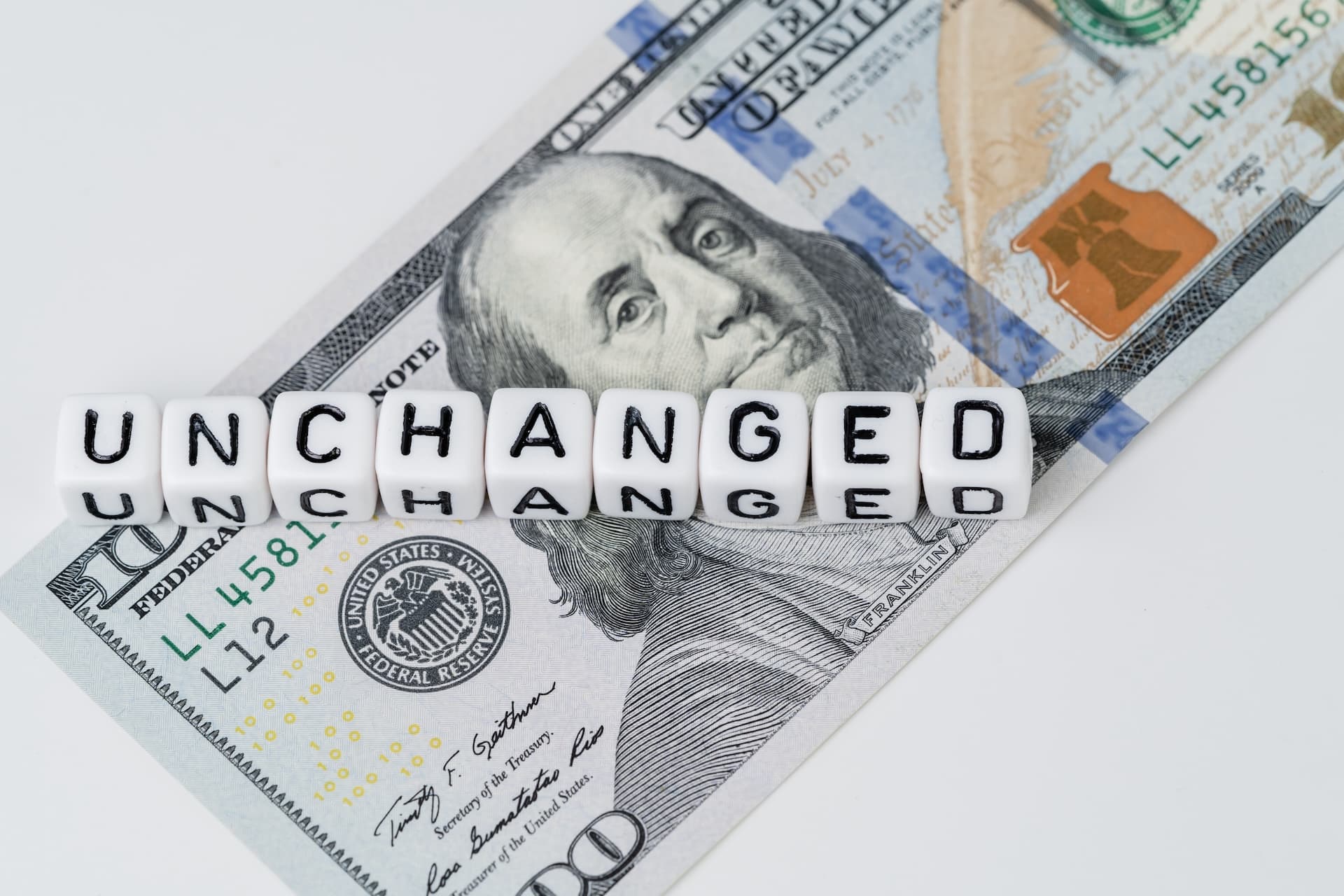Credit Sesame explains why stock values fell after a recent Fed announcement that it is leaving interest rates unchanged.
Sometimes, you must think laterally to understand the relationship between the stock market and the economy. On January 31, the Federal Reserve announced it was leaving interest rates unchanged, and the market reacted with a 1.5% drop. Hundreds of billions of dollars worth of stock values were wiped out in a single afternoon apparently because the Fed did nothing. Understanding why this happened is important for investors and consumers whose current debts and future financial decisions depend on where interest rates are heading.
Understanding the Fed’s decision
The Federal Reserve’s part in all this is easy to understand. Having raised interest rates by 5.25% over the past couple of years, the Fed has signaled in recent meetings that its rate target may have peaked. Further, it anticipates being able to cut rates by a total of roughly 0.75% by the end of this year.
The reason for the historic rate hikes and the anticipated rate cuts is inflation. Based on the Personal Consumption Expenditures price index (the Fed’s preferred measure of inflation), the year-over-year inflation rate peaked at 6.8% in mid-2022. In response, the Fed hustled to raise rates to dampen price increases. This required an unusually steep course of rate hikes because the Fed funds rate had been unnaturally low since the Great Recession.
The rate hikes, among other things, helped bring inflation under control. By the end of 2023, the year-over-year inflation rate was down to 2.7%. This helps explain why the Fed hasn’t raised rates since July 2023 and is now forecasting lower rates by the end of 2024. Even so, having been burned by a surprisingly intense inflation flare-up, the Fed is in no hurry to start cutting rates. Not only did the Fed leave rates unchanged at last week’s meeting, but Fed Chair Jerome Powell stated that a rate cut in their March 2024 meeting is also unlikely.
Are people rooting for bad news?
While the Fed’s decision to leave rates unchanged is easy to understand, the market’s reaction to it takes more explaining. The stock market dropped by 1.5% in response to last week’s Fed meeting. Investors had speculated that rate cuts would occur more rapidly than the Fed forecast. Last week’s decision to leave rates unchanged, plus Powell’s subsequent comments, threw cold water on some of that speculation.
Lower interest rates boost stock valuations and encourage economic activity. However, while the Fed welcomes a healthy stock market, it’s not their mission to use interest rate policy to support the market. As for economic activity, Gross Domestic Product growth was strong in the second half of the year. In essence, the Fed is judging that a resurgence of inflation is a greater threat than a recession. That’s why it is choosing to go slow on lowering interest rates.
The Fed’s decision was vindicated a couple of days later by a surprisingly strong jobs report, showing that the economy is still going strong. The setback in the stock market shouldn’t be blamed on the Fed so much as wishful thinking about rate cuts.
Powell chided speculators in his comments after the Fed meeting for thinking good news was bad news. Indeed, there have been times when good news on economic growth has prompted an adverse reaction from stocks because it reduces any urgency the Fed might feel about cutting rates. Ultimately, a strong job market should be viewed as a positive for stocks rather than a negative.
The benefits of keeping rates higher longer
While investors were hoping for a quick boost via aggressive rate cuts, the Fed’s caution about inflation seems justified. Plus, there are several benefits to keeping rates higher longer:
- Making sure inflation is dead. Generally speaking, severe inflation has more long-term negative effects than an economic slowdown, so erring on the side of firmly suppressing inflation is a good idea.
- Cooling speculation. The stock market has rallied strongly in recent months. The extreme reaction to last week’s Fed meeting suggests speculation about aggressive rate cuts was fueling some of that rally. Letting some of the air out of a speculative bubble is better than letting it get out of control.
- Creating less incentive to borrow. Lower interest rates encourage borrowing. Record consumer and government debt suggests borrowers already have plenty of incentive.
- Creating more incentive to save. The flip side of borrowing is saving. Saving rates have plunged over the past couple of years. Higher rates might encourage more savings.
As for the stock market, it has more than recovered from having its wishful thinking disappointed. In the two days following its sharp losses after the Fed meeting, the S&P 500 gained back even more than it had lost. Perhaps Friday’s strong jobs report allowed investors to treat good news as good news. Or else they found something else to speculate about.
If you enjoyed Interest rates unchanged but stock values fall you might like,
Disclaimer: The article and information provided here is for informational purposes only and is not intended as a substitute for professional advice.




















